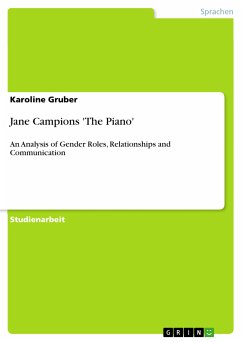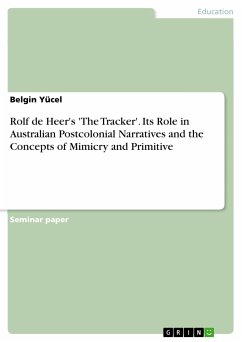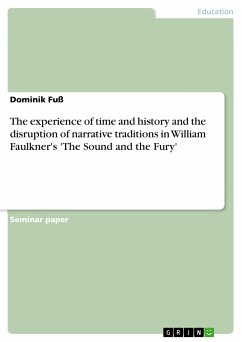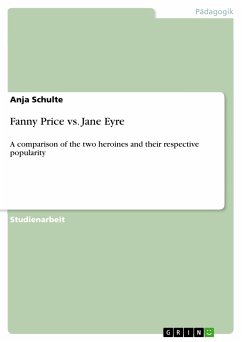Studienarbeit aus dem Jahr 2005 im Fachbereich Didaktik für das Fach Englisch - Literatur, Werke, Note: 1,0, Technische Universität Dresden (Institut für Anglistik / Amerikanistik), Veranstaltung: Outstanding Film Directors, Sprache: Deutsch, Abstract: Watching Jane Campion’s The Piano, the spectator is taken on an anthropological excursion to New Zealand in the middle of the 19th century. So the movie is set in a Victorian temporal context, and we become witnesses of the arrival of the first European settlers, mostly from England and Scotland. Ada, the protagonist, is an obviously disturbed woman since she has stopped talking at the age of six and even she herself doesn’t know why. The spectator sees him- or herself fascinated about Ada’s mysterious and unusual character as much as about her extraordinarily strong will. Without her consent, she has been married to Stewart, a colonizer living in New Zealand, and now she has to leave Scotland and travel to the unknown country. The movie begins when she and her daughter Flora arrive at New Zealand’s shore. The Piano features a fair amount of aspects worth to be analyzed. What appears to be the movie’s central role and all-determining, however, is the presentation of gender roles and the wide range of issues that are related to it. Therefore, this paper is going to draw attention to how The Piano demonstrates its characters’ gender identity, sexuality and ways of communicating. For this purpose, it will be important to analyze how the movie reflects the 19th century definition of gender and sexuality and how it has been influenced by the invention of the art of photography, which has often been discussed in psychoanalytic theory. This view on gender roles self-evidently has a substantial effect on Ada’s relationships towards her daughter Flora and towards Stewart and Baines, the men who are both courting her, which will also be examined. What is equally significant for the understanding of sexual identity during that time, however, is the comparison of the European settlers with the Maori people. Throughout the movie, the Maoris serve as a striking antithesis to the colonizers and hence highlight the Europeans’ specific attitudes and behavior. Still, it is not acceptable to simply tolerate the presentation of the Maoris, but it will be an essential part of the paper to profoundly criticize the one-sided view on them.
Bitte wählen Sie Ihr Anliegen aus.
Rechnungen
Retourenschein anfordern
Bestellstatus
Storno









